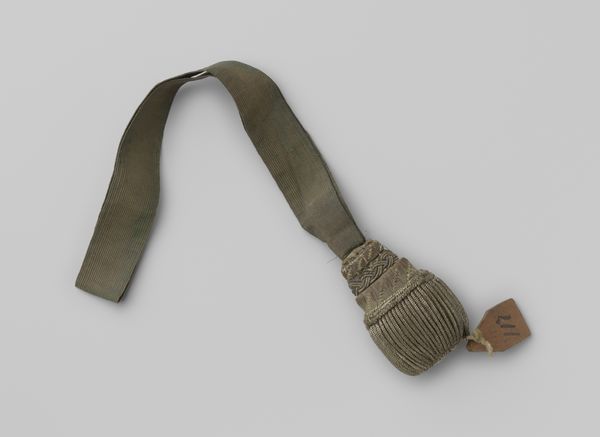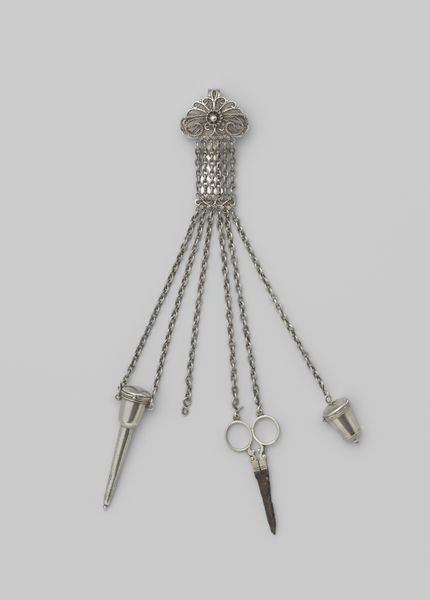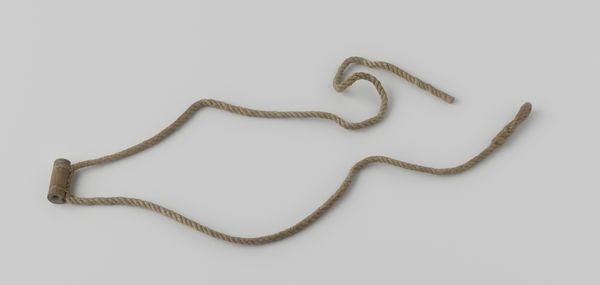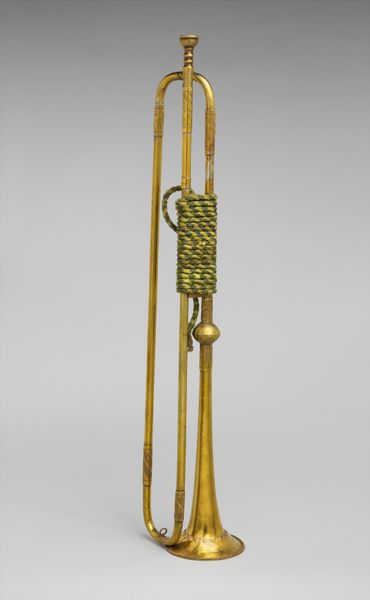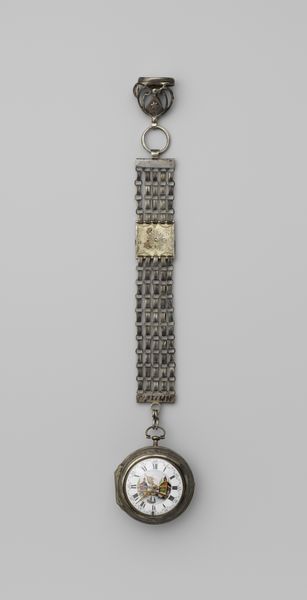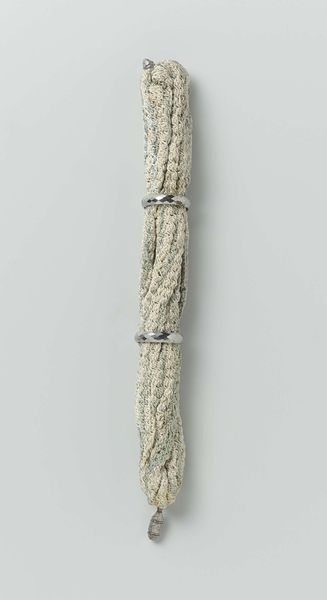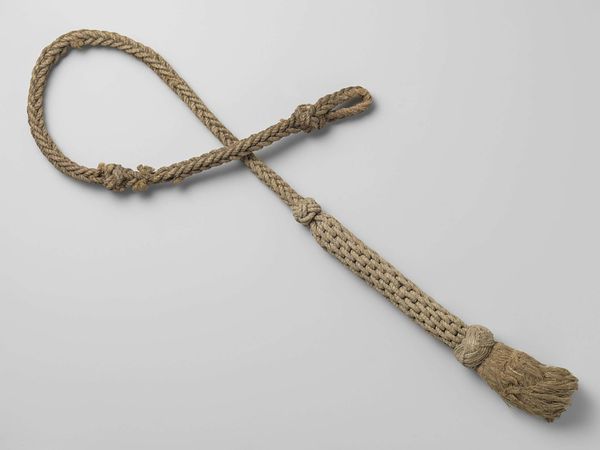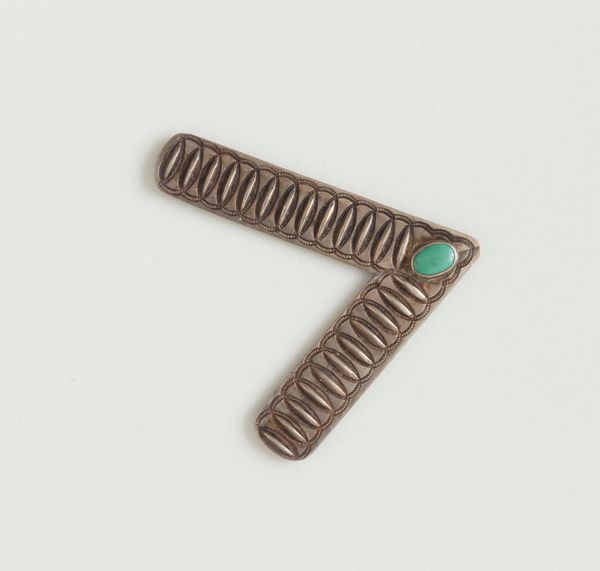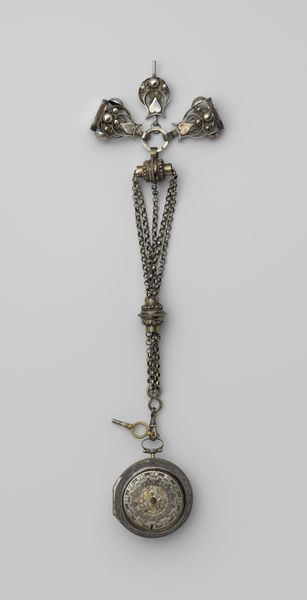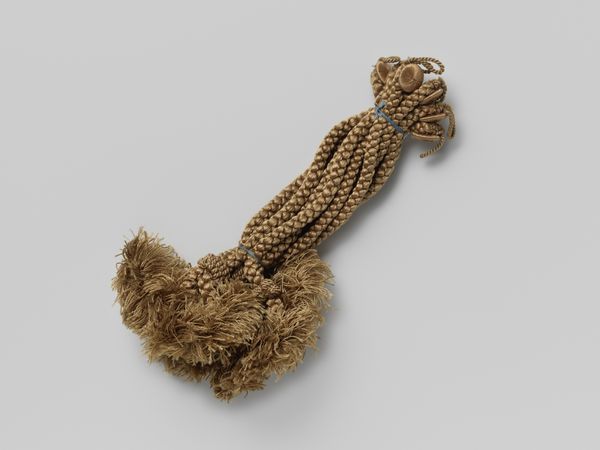
Lis voor bicorne officiers van gezondheid 3e klasse, regiment lanciers no. 10, ca. 1830-1831 1802 - 1832
0:00
0:00
assemblage, metal, textile
#
assemblage
#
metal
#
textile
#
decorative-art
Dimensions: width 19.5 cm, depth 6 cm, height 1.5 cm
Copyright: Rijks Museum: Open Domain
Editor: So, this object is titled "Lis voor bicorne officiers van gezondheid 3e klasse, regiment lanciers no. 10," which, from the metadata, seems to be from sometime between 1802 and 1832. It’s made from assemblage, metal, and textile. It looks incredibly detailed and the braid work feels intricate and almost…symbolic. What do you see in it? Curator: Indeed! It's fascinating how an object seemingly so simple, a braid from a military hat, carries so much symbolic weight. Note how the repeated knot motif, common throughout the 19th century military garb, not only suggests unity and strength, binding individuals to a collective cause, but also mirrors classical heraldic designs, almost unconsciously alluding to aristocratic traditions. What sort of continuity with the past is the wearer asserting by displaying it? Editor: That's interesting. The knotting feels very intentional, even beyond just holding things together. Is there anything specific about *this* design that stands out? Curator: Yes. These aren’t randomly placed coils and windings! The regularity of the interlace becomes a language unto itself. Look at the sheen of the metallic threads against the textile; does this perhaps signal status? Then consider the wearer: a health officer of the 3rd class. The association is immediately not about combat and conquest but *care* in an era of constant war and conquest. Where do our cultural assumptions about rank come from? Editor: I hadn't thought about the contrast between the military context and the caregiving role of the officer. So, this piece serves not only as a marker of rank but also communicates about shifting societal values of who is seen and rewarded? Curator: Exactly. What's more, objects like this, repeated across generations, become physical links to cultural memory. Each time the bicorne was donned, those values are reaffirmed for the community observing them, even perhaps those far beyond the regiment. Editor: I see what you mean. Thanks, I definitely learned a lot! Curator: My pleasure. I find this object very thought-provoking for contemporary considerations of collective identity and cultural memory.
Comments
No comments
Be the first to comment and join the conversation on the ultimate creative platform.
